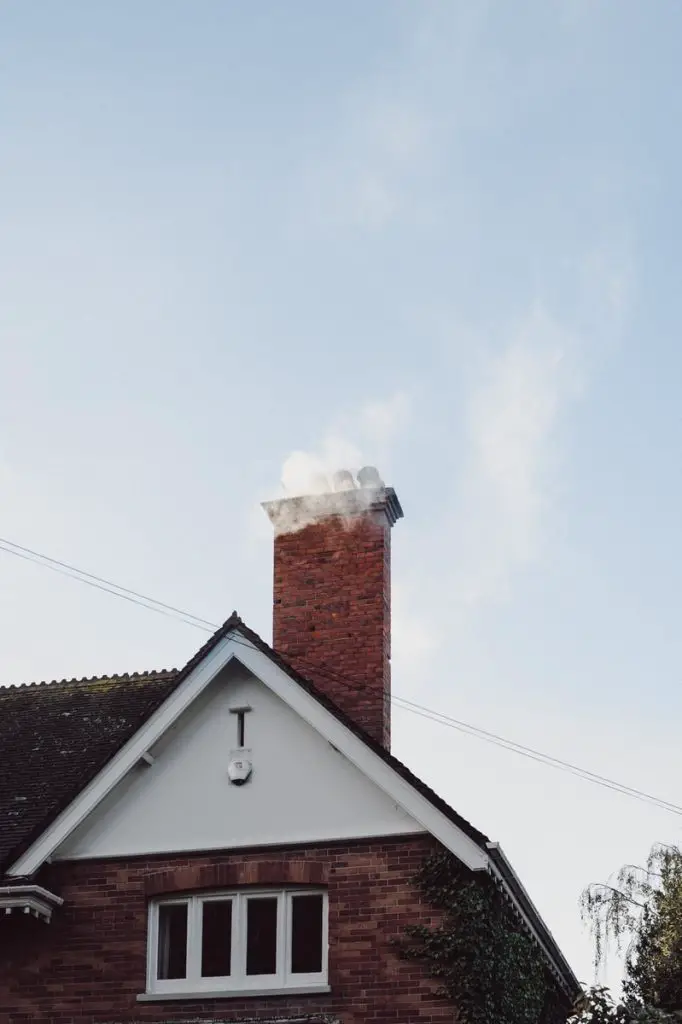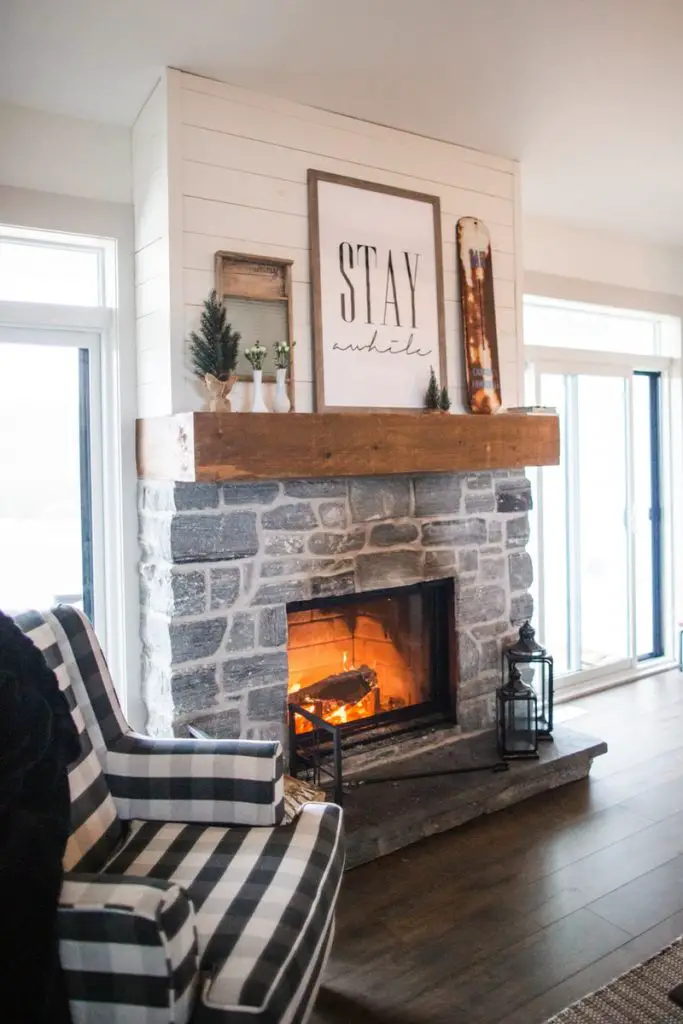In the winter months, people enjoy sitting in front of their wood-burning fireplace with family and friends, maybe even roasting chestnuts.
In fact, this is a great way to spend an afternoon, especially when it is exceptionally cold, snowy, and windy outside.
However, a smoking fireplace can ruin a comfortable evening. Here are several reasons and fixes for a smoking fireplace.
Contents
3 Reasons Your Fireplace May Be Smoking
With that said, here are 3 things you need to know about questions like, why is my fireplace smoking.
#1: Your Damper Is Closed
Before you attempt to light a fire in your fireplace, you need to know the steps that you need to take in advance.
Since some steps cannot be skipped without causing havoc on the inside of your home, you need to make sure that you know exactly what to do prior to getting started.
For instance, before you can start any type of fire in the fireplace, you need to make sure that your damper is fully opened.
Because partial openings will restrict the heat and flow of the smoke inside the fireplace too much, it is easy to fill up the entire room with smoke.
Simply put, even though starting a fire in the fireplace may appear to be a simple task to do, this step can easily be overlooked by someone that has not done this task before.
Or, based on the situation, sometimes an older responsible member of the family may skip or forget to open the damper wide enough.
Whatever the case, if you do not want smoke to fill up all of the rooms in your home, you need to make sure that you understand how to open the damper properly.
#2: You Need an Updraft because the Downdraft Is Too Cold
In many cases, the chimney in your home may be constructed on an external wall of your home. And, because of its present position, the chimney is exposed to the coldest temperatures.
Unfortunately, when this happens, it is important that the family pay close attention to the fire that has just been lit.
Since the cold air is a lot heavier and denser than smoke from a newly lit fire, a cold downdraft will begin to push the smoke into the room.
Fortunately, there is a solution to this problem that can be used to avoid these issues altogether. And, that is to create an “updraft” before you start to light the fire. Thankfully, this part of the process is relatively easy to do.
For instance, you should light a piece of newspaper (i.e. or other type of paper etc.) and then hold it up inside of your chimney. This is one of the best ways to get the airflow moving through and up the chimney.
#3: Your Damper Is Open But It’s Not Working
As mentioned before, opening your damper properly should fix this type of issue.
However, if your damper is not working, you will still see large amounts of smoke flowing throughout your home.
To take care of these issues, you may want to contact a certified chimney sweeper to inspect this problem for you, especially since they know exactly what to look for (i.e. dirt, debris or other blocks inside of the chimney).
Also, when this professional enters your home, they may make other recommendations you may not be aware of, especially if your damper is the wrong size.
#4. Competing Air Pressure Is In Your Home
Another common problem that you may experience with a newer home is competing for air pressure. This type of problem normally occurs when the home is sealed too tightly. Fortunately, this type of issue can be corrected very quickly and easily.
For instance, the only thing that you will need to do is crack a window in your home, particularly the window that is the closest to your fireplace.
By opening the window, this tight seal will be broken, and it will help to balance the pressure inside of your home. And, the smoke will begin to go in the direction that it really needs to flow, which is up your chimney.
In Summary
Smoke may be caused by a variety of things, including chimney obstructions, too much fuel, or excess moisture.
When there is too much fuel in the firebox, the flames are not hot enough to burn off all of the smoke.
This causes an excessive amount of smoke to enter the chimney and flow into your house. This is easily remedied by removing some of the fuel from your fireplace.
The problem could also be due to excess moisture in your fireplace or chimney. Excess moisture can lead to condensation on cold surfaces like brick or mortar, which can then drip down into the firebox and create smoke.
The best way to remedy this problem is by installing a gas log lighter or adding a dryer vent to your chimney system.
It is also possible that your chimney is blocked. This can be caused by a variety of things, such as leaves, birds nests, or even animal droppings.
You may also have an issue with the chimney cap. If this is the case, you might need to replace it with a new one or look for blockages.


